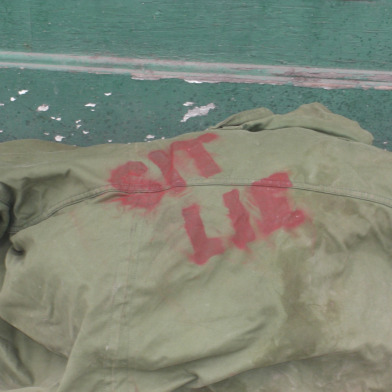 To its proponents, San Francisco’s sit/lie ordinance was supposed to be a boon to the city’s coffers. But the costs of actually prosecuting offenders, as well as the results of measures taken to paint some areas of SF as besieged by aggressive transients, might just cancel out that boon.
To its proponents, San Francisco’s sit/lie ordinance was supposed to be a boon to the city’s coffers. But the costs of actually prosecuting offenders, as well as the results of measures taken to paint some areas of SF as besieged by aggressive transients, might just cancel out that boon.
The reasoning behind the measure was that the city’s massive homeless population was scaring shoppers away from areas where the homeless congregate. By giving police the no-questions-asked ability to move a homeless person out an area without the need for a citizen complaint, more shoppers would feel comfortable being separated from their hard-earned dollars in more parts of the city. This additional money spent at local stores would equal more tax revenue for the city. In light of San Francisco’s mind-boggling $787 million projected budget deficit over the next two years, a swelling of the tax base couldn’t come at a better time.
However, enforcing the ordinance to the fullest extent of the law might actually harm San Francisco’s finances. As the Public Press points out, the first two times someone is cited for a violation of sit/lie, they receive a fine. Their third offense, and ones thereafter, result in jail time–costing San Francisco nearly $4,000 per imprisonment.
In its summary of the budgetary effects of the measure in the city’s voter guide to the 2010 election, the City Controller’s office estimated that the overall cost of implementing sit/lie would be under $100,000 annually. That assumes fewer then 25 sit/lie arrests each year.
“Typically, the city’s cost is significant only if there’s jail time,” said Peggy Stevenson, the city performance director in the Controller’s office. “The likelihood of a person staying a night in jail is almost none.”
Evidently, the city government assumes that warnings and fines will be enough to make San Francisco’s homeless population disperse to less hostile pastures–even though the areas where the vast majority of services benefiting the homeless are located within sit/lie’s boundaries.
True to Stevenson’s prediction, no one has thus far been thrown in jail under the law. Even though the measure was approved by San Francisco voters last November, SFPD only began enforcement last month–and the department is rolling it out very gradually to avoid upsetting the significant minority of San Franciscans who forcefully oppose the measure.
SFPD’s caution is based on the high degree of selective enforcement the law necessitates. As written, anyone sitting or lying on a commercial sidewalk during business hours can be cited, however there’s no way SFPD would fine a family of tourists, pooped from buying saltwater taffy and overpriced t-shirts at Fisherman’s Wharf, who momentarily rest their weary legs on an Embarcadero sidewalk.
Since there wasn’t a way to specify the law only apply to “unsavory characters,” sit/lie’s backers emphasized that the measure would only be enforced at the police’s discretion–this, quite reasonably, made a lot of people worried. SFPD’s concerted effort to implement sit/lie as gently as possible, at least initially, is primarily to assuage those fears.
With each warning or citation, officers are handing out cards with information about homeless-targeted services, such as shelters, medical clinics as well as mental health and substance abuse clinics.
During the final week of April, SFPD issued eight sit/lie citations and 75 warnings. SFPD’s Park Station reports issuing, on average, at least one citation per day.
The potential cost of enforcement isn’t sit/lie’s only drawback for groups outside of the measure’s target population. In an ironic turn of events, merchants in the Haight-Ashbury neighborhood, the very group who pushed sit/lie in the first place, have, they say, noted a significant downturn in business as a result of their painting the area as a dangerous war zone full of terrifying transient punks, and their mangy, menacing mutts, whose only joy in life is threatening respectable tourists as a strategy to get the measure passed.
Recently, an anonymous group protesting the measure has installed benches all over the city as “a visible resistance to the privatization of public space.”
Across the Bay, some businesses in Berkeley are pushing for the implementation of a sit/lie ordinance modeled on San Francisco’s. Despite the Berkeley City Council’s seeming complete lack of interest in pursuing the measure, it being Berkeley, there was still a protest.
Want more news, sent to your inbox every day? Then how about subscribing to our email newsletter? Here’s why we think you should. Come on, give it a try.









